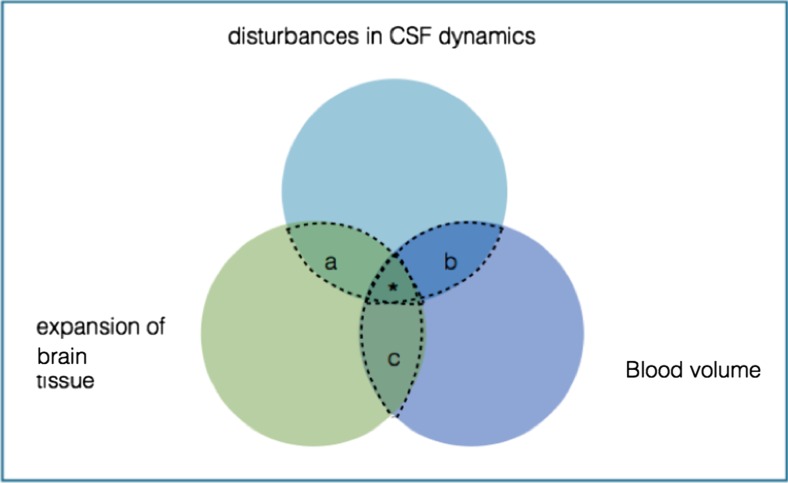Fig. 2.
Intracranial factors that affect ICP: the Monro-Kellie Doctrine. Each circle represents one of the three broad intracranial categories: blood, CSF and brain tissue. If the normal physiological and/or anatomical state of either one of these categories is altered, and the compensatory change from the other categories is exhausted, this will result in an increase in ICP. The overlap of the circles represents how each category can affect the other (a, b, c). The density of the circles correlates with the ICP, with * denoting the highest ICP

